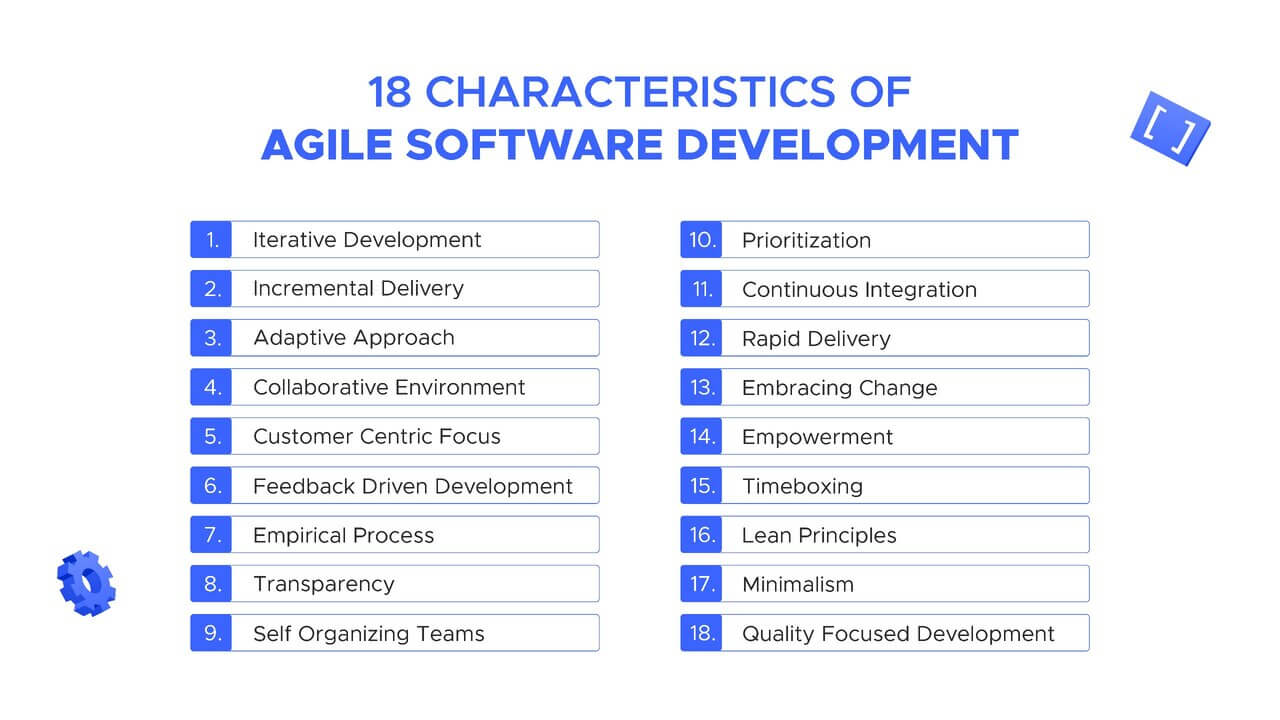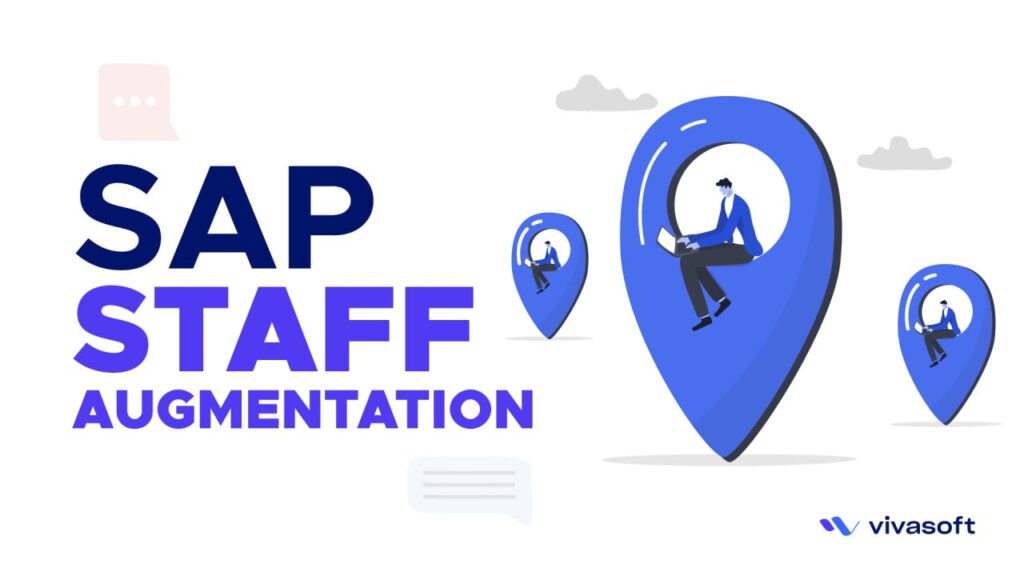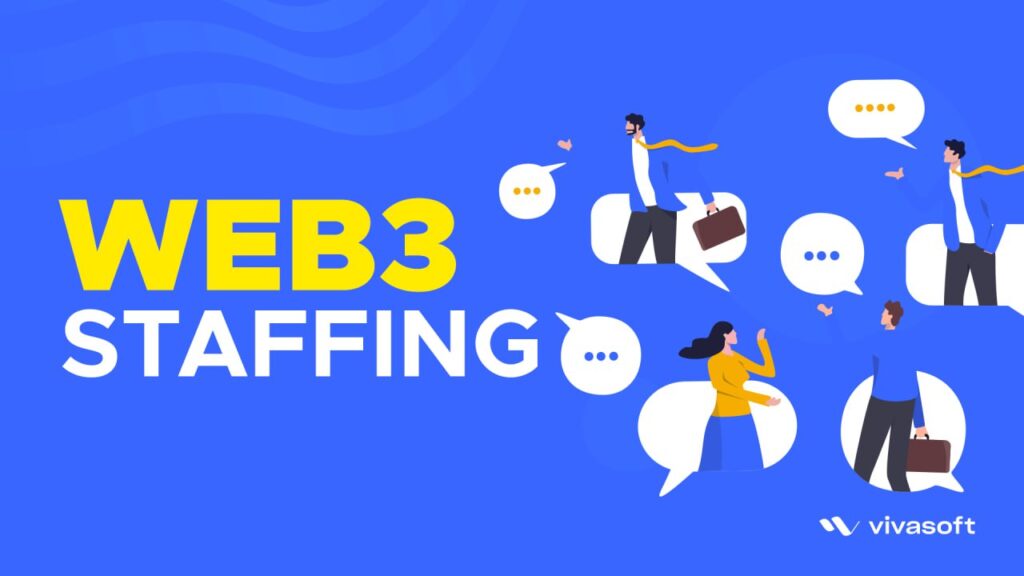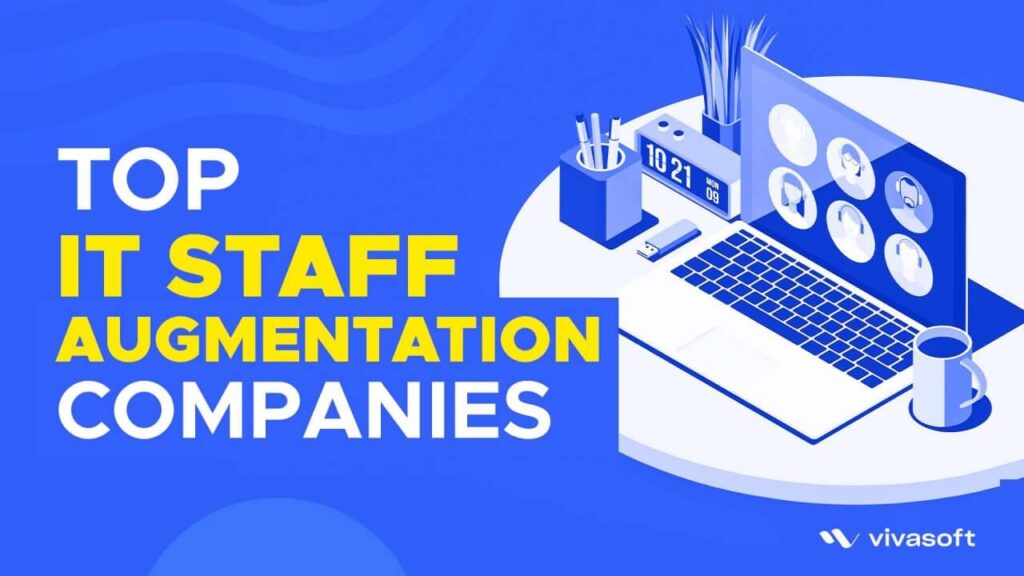Agile software development is a collaborative and iterative approach to software development. It promotes flexibility, adaptability, and client satisfaction. In the early 2000s software development teams began to recognize the limitations of traditional methodologies in coping with the increasing complexity and uncertainty of modern projects. That is when the agile rose. A paradigm shift in software development caused by Agile.
In this article, we will navigate through the key characteristics of Agile software development. These characteristics form the foundation of Agile’s success in high-quality software development.
Fundamental Traits of Agile Practices

Agile software development has several fundamental traits. Agile is an iterative and incremental development approach. Projects are divided into achievable iterations. Another fundamental trait is flexibility. This allows teams to embrace changing requirements and adjust plans accordingly.
Both Scrum and Kanban are popular Agile frameworks. Kanban – a project management framework. It focuses on visual tasks to manage workflows. Scrum is also a project management framework. It helps teams in managing their work by utilizing a set of ideals, guidelines, and procedures.
18 Characteristics of Agile Software Development

Iterative Development
Agile software development uses an iterative method during the development process. The iterative approach is easy to implement in the development process. The software or product development process is divided into multiple distinct versions in an iterative approach. Each variant delivers some valuable improvements. This methodology allows software developers to review software development processes continually. This improves the development performance incrementally. This also creates opportunities for constant evaluation.
Large tasks are broken down into smaller ones through iterative development. So, the smaller tasks can be repeated and researched throughout the development process. The iterative development method focuses on refining a product in every iteration.
Incremental Delivery
Incremental delivery means delivering the work in small packets rather than all at once. Each incremental delivery is complete, tested and usable. Incremental delivery allows businesses to have greater visibility into what is being delivered. Though it seems like a process after process, implementing it is easier.
Let’s understand it more with an example. Imagine building an e-learning app. There are video courses, quizzes, student profiles, etc. To develop this app using an incremental method, the video courses will be built first. Then the quiz section and after that the student profile management systems. Each part will be tested for perfection before moving on to the next part.
Adaptive Approach
Adaptive approach is needed in the frequently changing environment of today’s fast-paced world. The dynamic nature of business requirements leads developers to adopt new methods. This method of Agile software development can withstand sudden changes in software requirements. It illustrates a development strategy based on continuous learning and adaptation.
Collaborative Environment
Client collaboration during the development process is one of the key characteristics of Agile. It keeps the project on track. Involving users in the development process also helps to get feedback during the process.
In Agile, team members collaborate across departments and exchange ideas to improve together. Collaboration among cross-functional teams builds shared responsibility and efficiency. It enhances productivity and innovation. When collaborating closely together, team members can use their unique perspectives and skill sets to solve issues more effectively.
Customer Centric Focus
The main priority of Agile software development is client satisfaction. It prioritizes customer needs and feedback. As clients are involved throughout the development process, teams can better understand their requirements. They listen to the client continuously & refine the product to meet their needs. Thus, delivery of products truly addresses customers needs.
Feedback Driven Development
The feedback-driven development means using the application related feedback data in the ongoing development process. Agile developer teams regularly ask users, stakeholders, and team members for feedback. They use this information to identify areas for improvement and make necessary changes.
Continuous feedback loops facilitate continuous improvements. This enhances product quality and user satisfaction.
Empirical Process
The empirical process enables ongoing adaptation and improvement and the highest-quality products. This management framework is based on the principles of transparency, inspection, and adaptation. This allows teams to evaluate and adapt the development process as needed. It is bound to have a team willing to learn and adapt to make the empirical process work.
Agile relies on empirical data for decision-making. This allows teams to make efficient choices as it is based on real world observations.
Transparency
Transparency is among Agile’s fundamental characteristics. Agile teams share information openly. Project status, goals, and challenges visible to all stakeholders. Transparency is necessary for inspection and adaptation to be effective.
Transparency is a typical problem in most unsuccessful software projects. Members of the team probably knew the issue before it hit. But for the lack of transparency, they couldn’t raise the issue early. Leaders should encourage team members to raise issues early and constantly. The same thing applies for the product owner too. Transparent meetings between leaders, team members & product owners gives the team a chance to adapt and improve constantly.
Self Organizing Teams
Self-organizing teams do not wait for managers/ leaders to assign the work to them. The teams prioritize required tasks and identify the works that need to be done. They also manage the timeline on their own. The leader/ manager becomes a source of help when the team wants it. Until then the manager stays out of their way. This encourages creativity and autonomy, which results in more efficient problem-solving.
Agile teams are responsible for planning, executing, and delivering work. Because of this, they are able to modify their procedures and practices to best suit their needs.
Prioritization
Setting priority to tasks is crucial in project management. In the Agile prioritization process a set of tasks is aligned in terms of importance. Prioritization’s primary goal is to distribute funds to significant agile projects. It focuses on the best places to allocate resources and launch projects.
Effective prioritization of tasks ensures delivering the highest value product to customers. Agile teams use techniques like user stories, backlog grooming, and value-based prioritization to prioritize the most important tasks.
Continuous Integration
In Agile software development methodology, Agile teams integrate their code frequently. Developers will integrate their code daily to test the changes as early as possible. It allows instant feedback and reduces the risk of integration conflicts. Continuous integration combines continuous builds and automated testing to protect the software quality.
To do continuous integration, a team must have the discipline to pause the development process. Continuous integration provides early detection of integration issues. So, the team members can solve them during the development and improve overall product quality.
Rapid Delivery
Agile software delivery is also known as rapid software delivery. Here, large tasks are broken into smaller portions and delivered to the client from time to time. This approach allows companies to release products more rapidly. The rapid software delivery helps teams to respond quickly to market demands. Thus, Agile teams minimize time-to-market and improve customer satisfaction.
Embracing Change
Changes are a natural part of the development process. Agile teams continuously learn to embrace the change of the latest developments. It allows team members to become adaptive and innovative. Agile development teams are responsive to any changing requirements, priorities, and market conditions. Here, embracing changes becomes an opportunity for learning and improvement.
Empowerment
Agile empowerment means granting authority to software development teams over their work. A shift in power happens here. They take ownership of their work, make decisions autonomously. This affects their daily responsibilities and overall project direction. Empowering team members encourages a sense of ownership and accountability. It drives their motivation and improves overall productivity. Empowering team members in this way makes them creative & enhances their problem solving capabilities.
Timeboxing
Timeboxing in Agile means setting clear time boundaries for the specific portion of tasks or activities. The methodology of timeboxing is completing a certain deliverable work within a fixed timeframe. Here team members don’t work until a task is finished and calculate how long it took to finish. The team will stop working when the timebox ends. After that they will review the development progress. They evaluate their performance in order to make enhancements in the future. Agile teams use timeboxing techniques like sprint planning, daily stand-ups, and sprint reviews to set clear time boundaries.
Lean Principles
Lean Agile principles are playing a significant role in today’s modern project management & software development. This methodology is for the organizations with larger and more complex projects. Lean methodology maximizes value delivery while minimizing waste. It optimizes resource utilization. It eliminates unnecessary activities, processes, and features that do not contribute to the final product. This focuses on delivering value to customers.
Minimalism
In Agile, minimalism means minimizing unnecessary complexity & focusing on doing essentials. Agile software development teams try to deliver simplest solutions to meet client needs. They avoid over-engineering and adding unnecessary features. These things may increase complexity without adding value. By avoiding such things, minimalism enhances product clarity and usability.
Quality Focused Development
The Agile software development process is quality focused. The goal of this process is to deliver what a client wants and useful to him. Because of getting frequent feedback and performing multiple tests & inspections during the development procedure, the result always comes excellent. The product owner can always make necessary adjustments according to his needs before finishing up the whole thing.
Agile software development teams use techniques like test-driven development, code reviews, and automated testing. By using these techniques they maintain high levels of quality and prevent defects.
Benefits of Agile Software Development

Agile software development is one of the most popular project management methods in today’s competitive digital age. Top companies of the world have adopted this methodology to manage their projects. Here are advantages of Agile software development:
- Because of its flexibility Agile is preferred by all. It allows teams to adapt quickly to changing requirements and market conditions.
- The iterative approach of Agile provides developer teams and customers to make adjustments throughout the development process.
- Agile gives faster time-to-market compared to traditional waterfall methods.
- Higher-quality software due to continuous testing, feedback, and refinement.
- Agile is a customer-centric methodology. Customers are constantly involved throughout the development process to give feedback and make necessary adjustments or corrections. The final product always meets or exceeds customer expectations.
- The iterative approach Agile allows developer teams to identify and mitigate risks early in the development process.
- Continuous feedback loops & continuous integration of the code enhances team collaboration.
- Agile software development is a cost-effecting method. It can optimize resource allocation and maximize return on investment.
Conclusion
Agile is certainly a revolutionary approach to software development. The characteristics of Agile software development shows why it is favored by the top companies. It empowers teams to value customers more efficiently. By adopting this methodology businesses can navigate through the complexities of modern software development and achieve their goals with confidence.
















